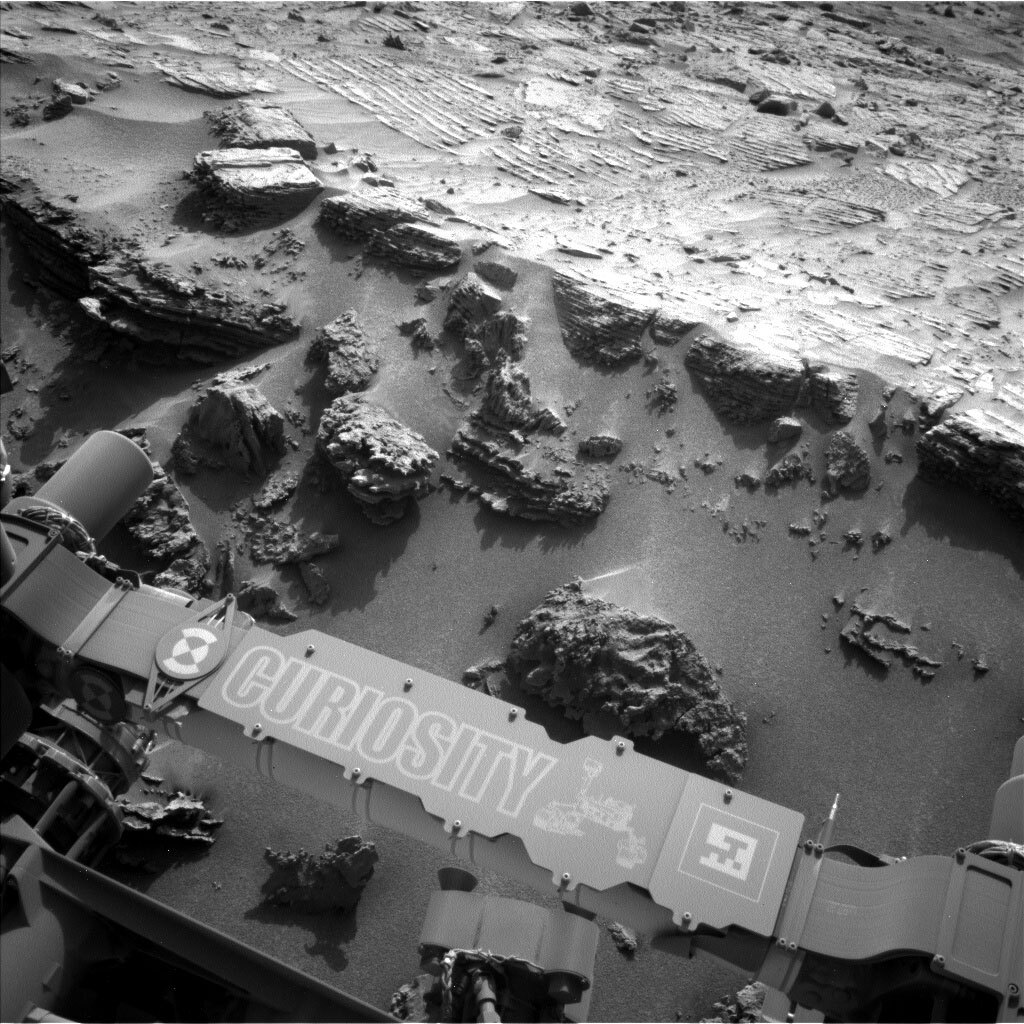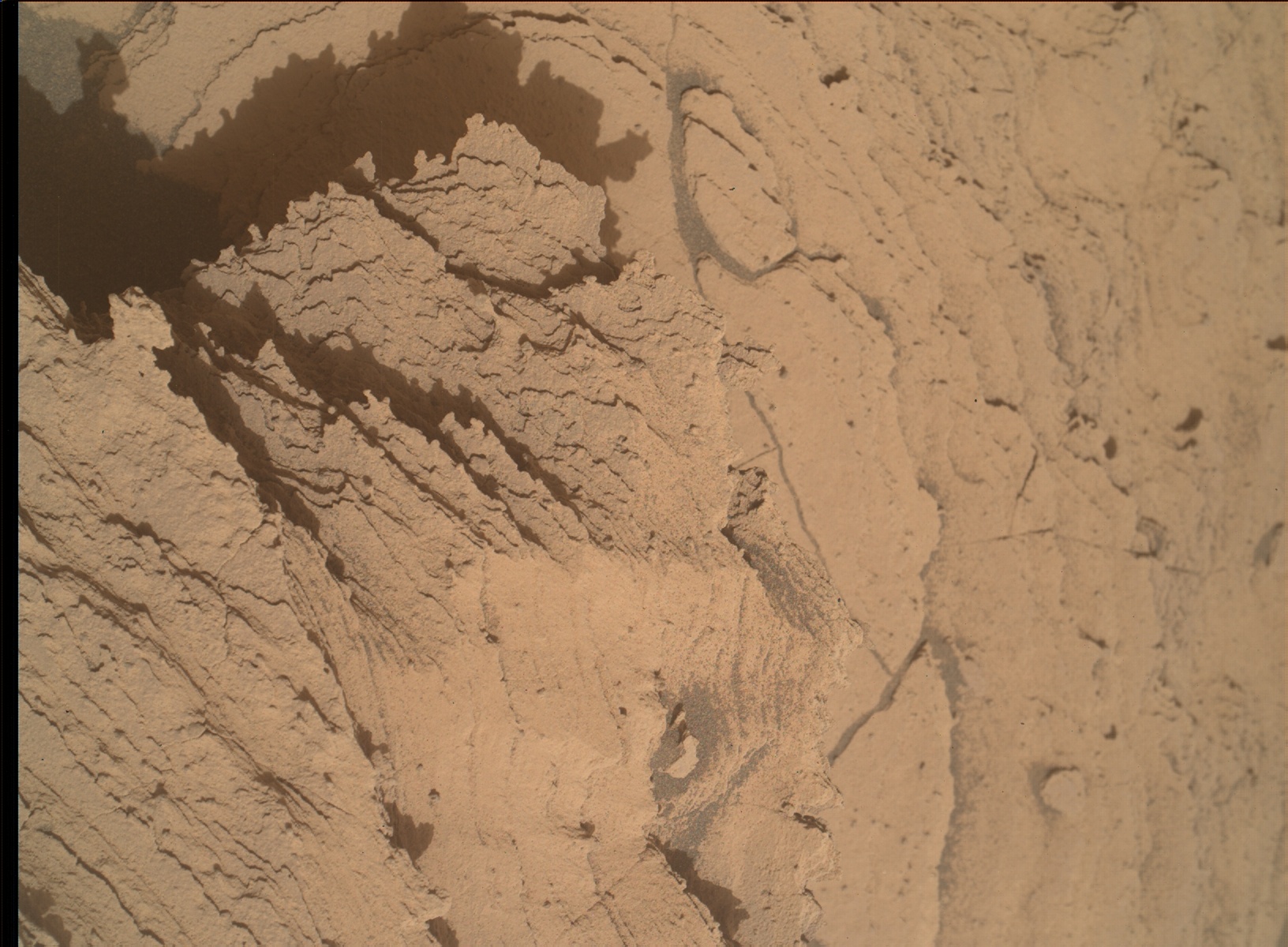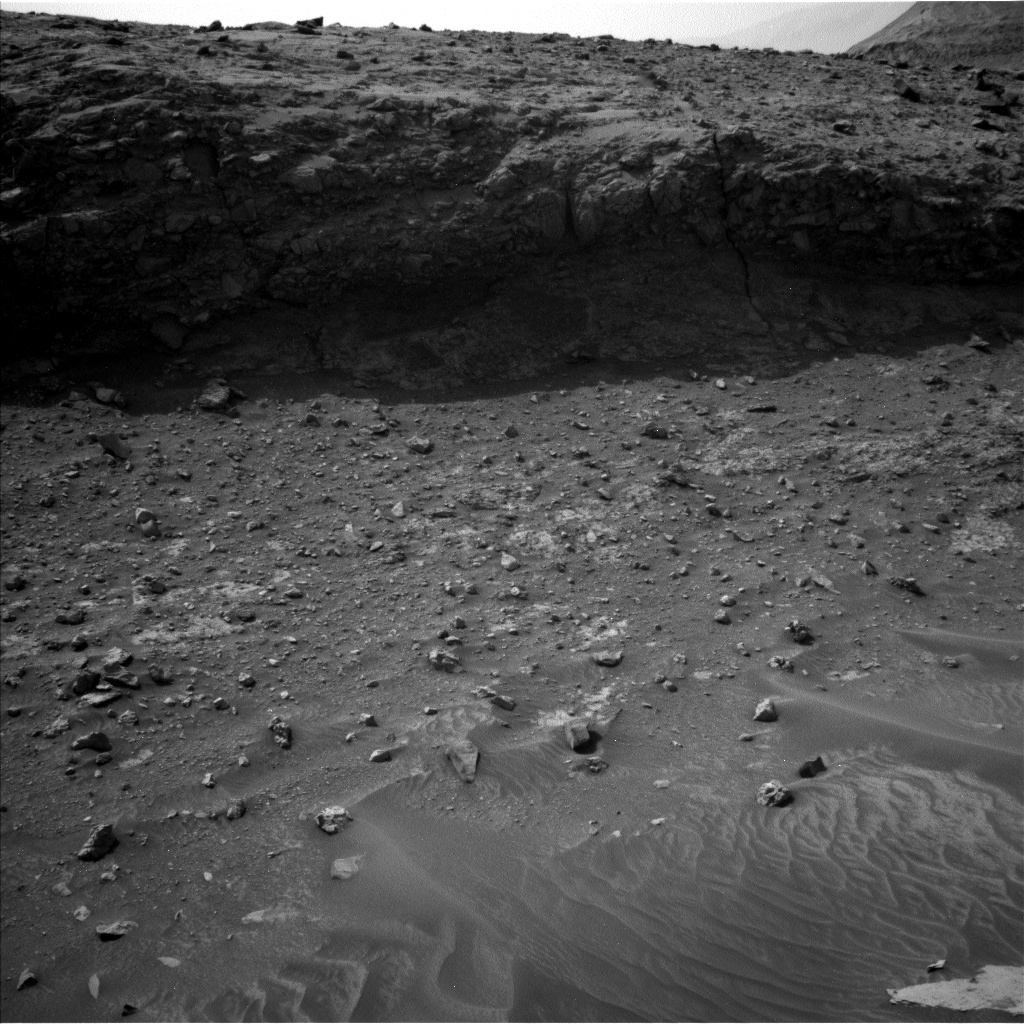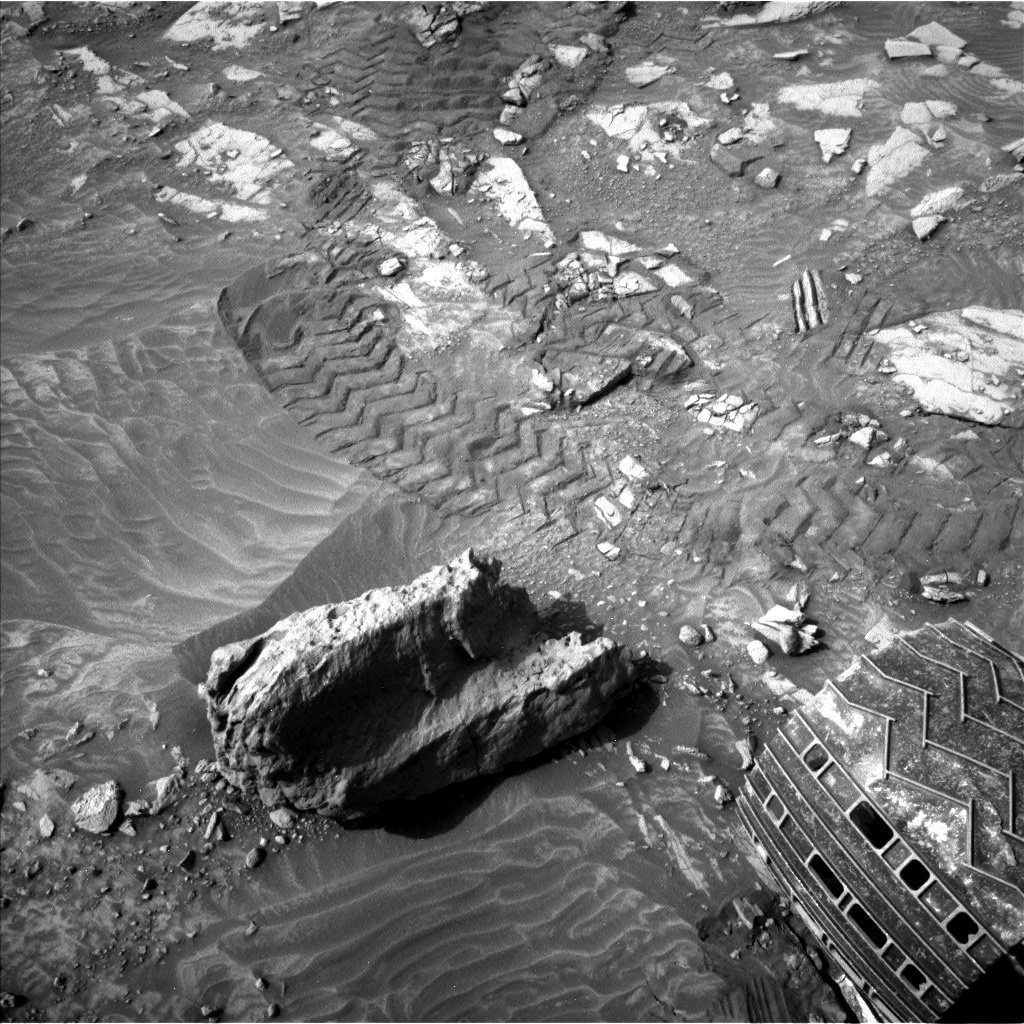2 min read

We were very glad to come in to today’s planning to see the drive placed us in a perfect position to bring out the robotic arm to do some science!
The rover will spend the first several hours of the sol 3688 plan taking ChemCam and Mastcam. ChemCam will use its laser on the target “Quixada” followed by ChemCam imaging of “Xiriana” and “Xidao.” Then Mastcam takes over with imaging the now-laser zapped Quixada, Xiriana, and the future robotic arm target “Tucuxuma.”
Once that long imaging block is done, we’ll take out the robotic arm to take a cool mosaic of the layered rocks in front of the rover at the target Tucuxuma, along with an APXS integration and some MAHLI imaging of another target “Tamandua.” We are also taking some inspection imaging of APXS. Today was a tricky one for the arm Rover Planners, since all the bumpy and lumpy rocks you can see in the image above made it really hard to find a place to safely put the arm down without risking bumping our turret into the other rocks in the area. I was “RP2” today and I supported the arm Rover Planner in finding targets, evaluating safety of the robotic arm, and also doing the final verification and modeling of the commands.
After the arm activities, the rover will take a short nap before waking up to take a Navcam movie looking for dust devils and sending data back to Earth. The rover then takes another nap, waking up later in the evening for APXS integrations on the Tamandua target. Later that night we’ll clean APXS and move the robotic arm into a safe overnight configuration in the air. After that, the rover will sleep for a few more hours before communicating more data back through our Mars orbiters. The plan also has our standard environmental monitoring activities with REMS, RAD, and DAN scattered throughout. The rover will sleep the rest of the night, preparing for another fun day of science tomorrow!
Written by Keri Bean, Rover Planner Deputy Team Lead at NASA's Jet Propulsion Laboratory







